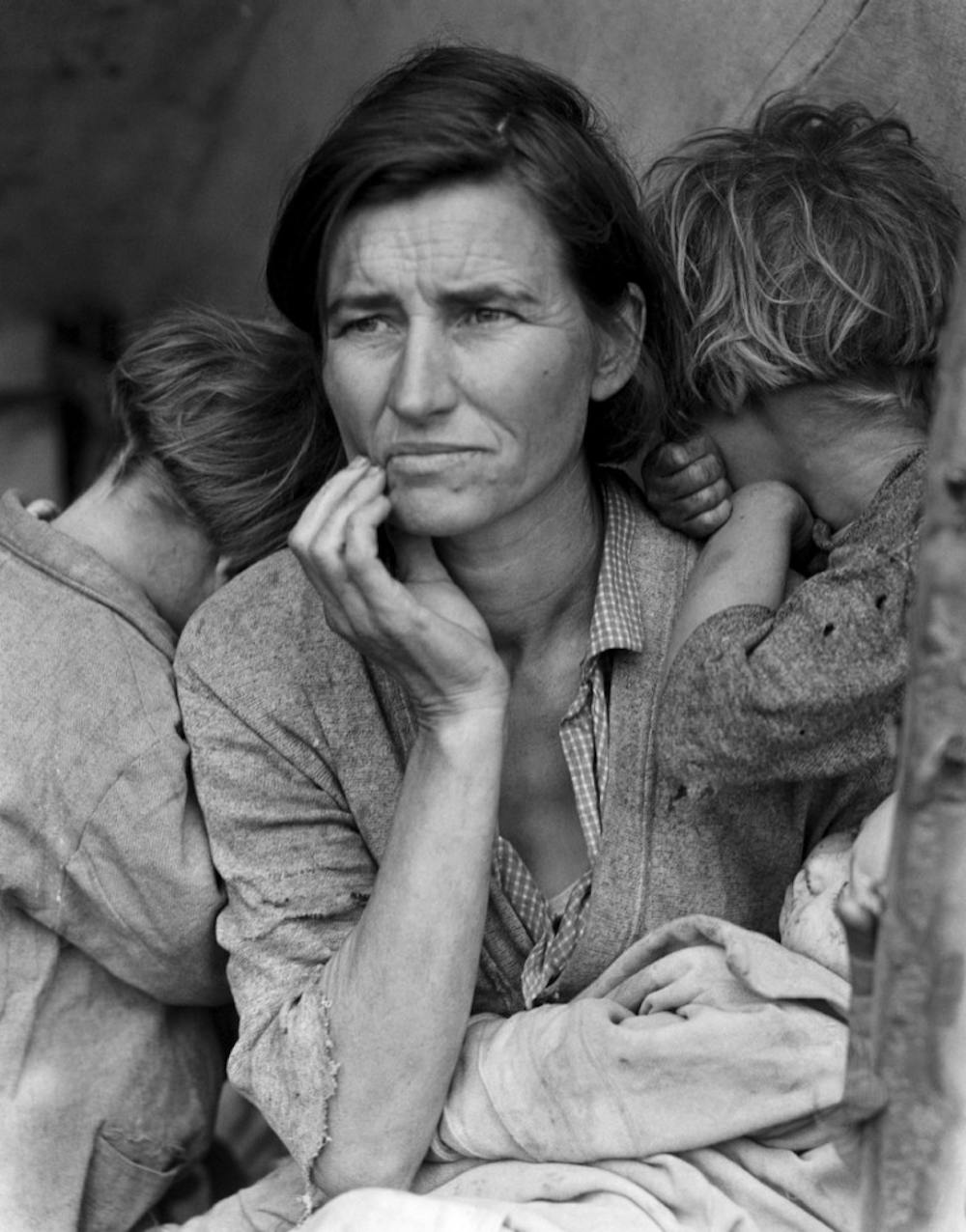Last Wednesday, Linda Gordon, the 2017 UNC William E. Hewit Distinguished Professor of History, presented “Visual Democracy: The Photography of Dorothea Lange.” Free and open to the public, and hosted by UNC’s history department, Gordon discussed the impact and legacy the work accomplished by famed Depression-era photographer, Dorothea Lange.
Gordon originally trained as a Russianist, a person who studies Russian culture and language, graduated from Yale University with an MA and PhD in Russian History in 1970. She’s the recipient of numerous awards and prizes for her books, including the Bancroft Prize, the Beveridge Award and the Pulitzer Prize. Her topics and themes range from welfare politics and racial ideologies to birth control and photography in general.
Gordon’s most recent book, “Dorothea Lange: A Life Beyond Limits,” which examines closely how gender works, evolves and generates the life of the individual through the portrait of a forceful personality.
Born in Hoboken, New Jersey, Dorothea Lange, was an American Depression-era photographer and photojournalist. She is most famous for her work conducted while employed under the Farm Security Administration, humanizing the sufferings and consequences occurring at the time of the Great Depression. Her efforts as a photojournalist helped influence documentary photography for future generations.
Fritz Fischer, a UNC history professor, explained his thoughts on Lange’s work.
“As a highly skilled photographer, Lange captured the emotional essence and impact of the Great Depression in her photography, exposing how serious and damaging it was in the hearts, minds and souls of Americans,” Fischer said.
At the age of seven, Lange contracted Polio, which affected her tremendously throughout life. This disability, however, did not every stop or hinder Lange from succeeding in life. In fact, Gordon mentioned that while slow, Lange was extraordinarily strong and resilient, and had a unique way in photographing her subjects.
“She felt a need and desire in getting her subjects to relax in their natural body language,” Gordon said. “She went about this through means of conversation and demonstrating sensitivity with these individuals. This was absolutely central to her photography.”
Another quality that made Lange stand out was her portrayal these individuals overall, having a talent in making her subjects suffering appear beautiful.
“Lange was quick to see beauty in people you would not distinguish or recognize at first as beautiful,” Gordon said. “She had a special talent for making suffering seem and appear beautiful, lovely, and captivating.”
Not only did she photograph the unemployed, downtrod men and women wandering the streets or plains during the Depression, Lange also photographed migrant workers, Japanese internment camps and African-Americans as well.
“Lange had an enormous assemblage of images related to people of color, making up roughly a third of her entire collection,” Gordon said. “Not one of these photographs, however, were ever distributed or published by the press. During the time, the argument went that only whites could emote sympathy for support in Roosevelt’s New Deal Policies.”
The larger message and overall theme behind this presentation, however, dealt with the notion of visual democracy and how photography impacts the political climate surrounding everyday Americans.
“The main theme of Gordon’s presentation covers the idea of visual democracy, revealing how important photographs and images can be in terms of shaping, determining, and changing policy,” Fischer said.
Gordon also explained how Lange wasn’t as much a political activist as she was a visual arts activist.
“She had a very calm and patient outlook in trying to expand democracy to include everyone, making possible full citizenship in participating within our representative democracy,” Gordon said.
In short, the message was showing how documentary photography could impact policy, in this case, being mostly New Deal policies and regulations during the era of the Great Depression. Corinne Wieben, UNC assistant professor of medieval studies and history, shared her thoughts regarding Gordon’s presentation.
“Gordon excelled in incorporating a variety of perspectives and considering her life in multiple different contexts, while presenting it all in a cohesive narrative,” Wieben said. “She never ceased to tell a story and her message can resonate with any audience.”
Gordon’s presentation expressed how imagery and still photography has the power to invoke feeling, influence sentiment, and drive emotion in individuals, enticing them to act in whatever way. Fischer even mentioned the ruthless and cold-blooded chemical bombings of Syria by President Bashar Al-Assad, which had an impact on the Trump administration’s decision-making. Trump’s decisions, in other words, were determined by images and photojournalism.
“As a historian, Gordon’s talk did a number of things for me,” Wieben said. “For one, her analysis really made me rethink the sources I use and read. She clearly consults history as a continuous and endless phenomenon, also borrowing from art historical theory exceedingly well.”
Gordon concluded the night by opening an opportunity from questions by the audience, including what she would ask Langue if she had the chance.
“There are tons of questions I would ask her,” Gordon said. “For one, I would love to know more what she thought regarding the women’s movement during the 1960s and 70s, since she seemed surprisingly conservative in rhetoric, when asked about it, which is, at least to me, uncharacteristic of her.”
“Her life was simply photography,” Gordon continued. “Lange demonstrates how documentary photography can be art.”








